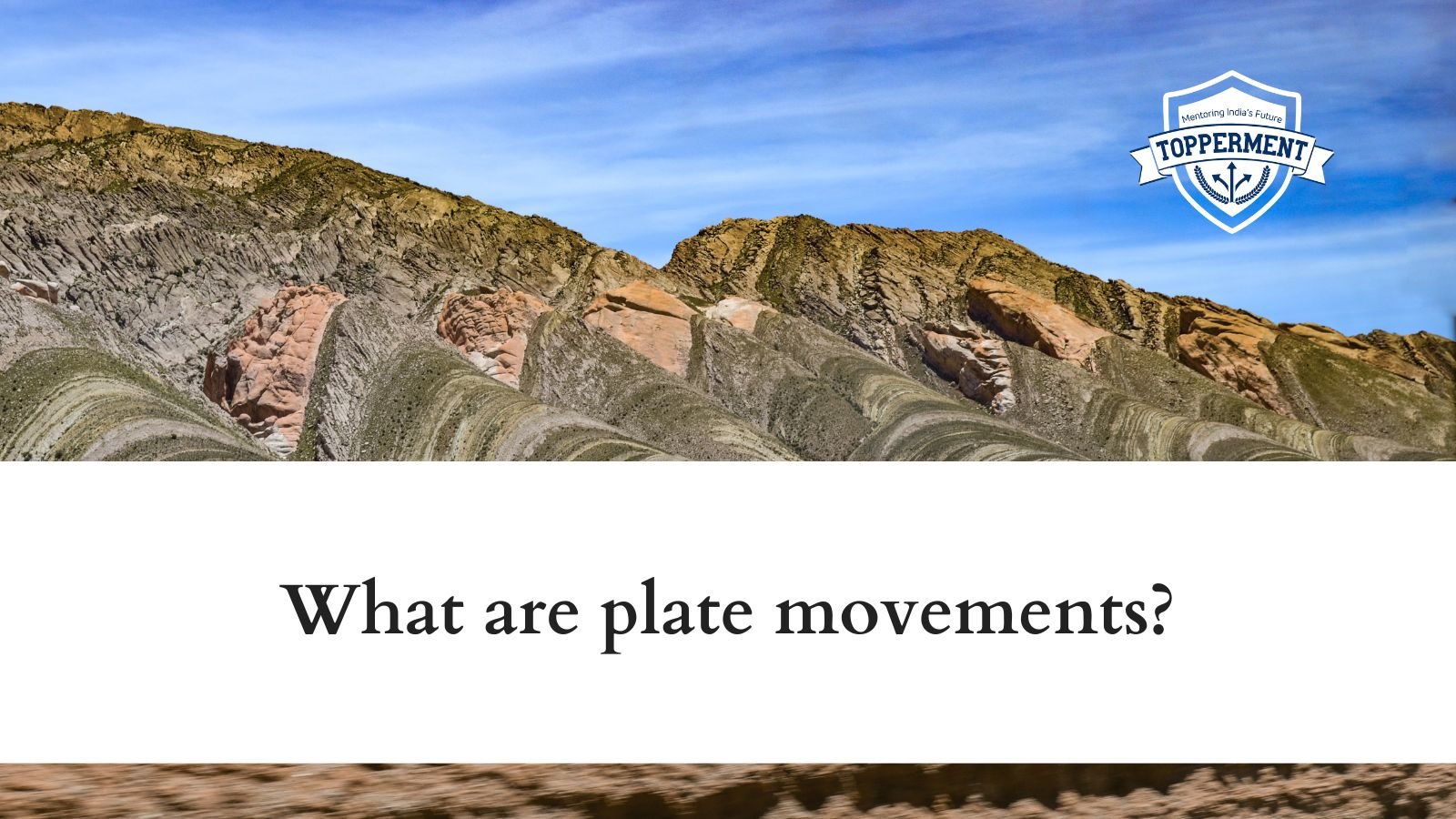Plate movements or plate tectonics is an interesting theory that tells us about the Earth’s outer shell is divided into several plates that glide over the mantle. The earth’s lithosphere is composed of seven or eight major plates and many minor plates.
The plates that glide over the mantle of the earth are hard and rigid shells compared to Earth’s mantle. When these plates meet, their relative motion determines the type of boundary like convergent, and divergent.
What are the causes of Plate Movements?
Plate movements affect human life in many ways they cause earthquakes, volcanism, and mountain building, and it also includes the recycling of elements within the biosphere
What are the types of plate movement boundaries?
There are two types of plate movement boundaries and they are divergent and convergent. They are formed as a result of plate divisions. The divergent boundary is a linear feature that exists between the two tectonic plates that move away from each other.
The divergent boundaries are mainly responsible for the division of the tectonic plates that form a narrow rift valley. They produce rifts, and they become rift valleys. The divergent plate boundaries occur between the oceanic plates.
The convergent boundary also known as the destructive boundary is an area where two more or lithospheric plates collide. In this process, One plate eventually slides beneath the other, and this is called subduction. These collisions happen on scales of millions of years and they can lead to volcanism, earthquakes, and the destruction of the lithosphere.
The convergent boundaries occur between the oceanic lithosphere and oceanic contentional lithosphere. The Himalayas were formed because of a convergence of the Eurasian, and Indo-Australian continental plates.
Plate movements are the process of formation of geographical structure and lead to the formation of the structure of rocks, mountains, rift valleys, and oceanic plates. The two types of plate movements have convergent and divergent forms due to the separation or collision of lithospheric boundaries.
Also Read
- What are the functions and properties of an ecosystem? | UPSC Environment
- What are the major elements of the earth’s crust? | UPSC Geography
Follow Us For More Content On:
https://www.instagram.com/topperment/
Tag:Convergent, Divergent, Earthquakes, Geography, Himalayas, IAS, IFS, IPS, IRS, Lithosphere, mantle, Outer Shell, Plate Movements, UPSC


